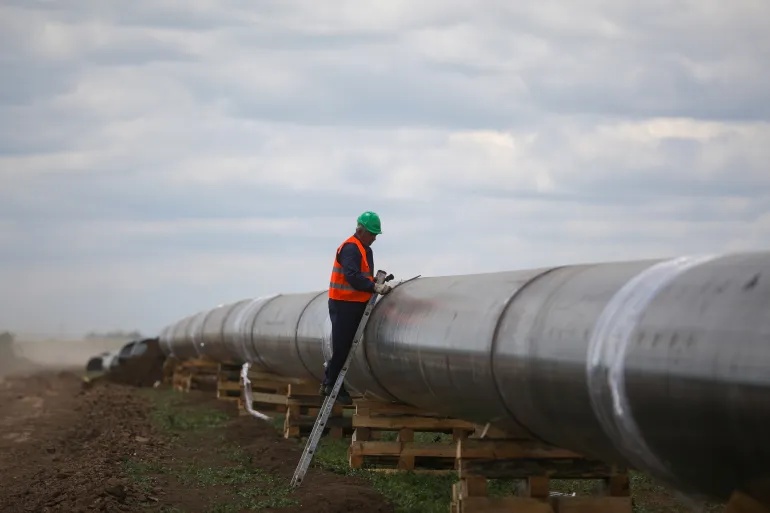When addressing Congress for the first time as US president on March 4, Donald Trump said, “Europe has sadly spent more money buying Russian oil and gas than they have spent on defending Ukraine.”
Trump has not been known for his statistical accuracy, but on this occasion, he may be right.
A report released on Thursday by Ember, an energy think tank, estimates that European purchases of Russian gas amounted to 21.9 billion euros ($23.6bn) last year, compared with 18.7 billion euros ($20.17bn) in financial aid to Ukraine.
That figure did not include military aid.
The European Union estimates it has disbursed or committed $194bn in military, financial and reconstruction aid to Ukraine since the beginning of the war.
Ember’s concern was that far from publishing a promised plan to phase out Russian gas completely by 2027, the EU, instead, increased its imports of Russian gas by 18 percent last year.
“The EU needs to move away from pricey and volatile fossil gas to meet its own security, economic and climate objectives, starting with a clear pathway for the Russian gas phase-out,” Ember wrote.
Vladyslav Vlasiuk, a Ukrainian presidential adviser, told EU ambassadors to Kyiv in January that Ukraine was upset by EU gas imports from Russia last year.
“It’s time to cut off the petrodollar flow fuelling Russia’s aggression,” he said.
Yiannis Bassias, a hydrocarbon industry veteran and energy analyst at Amphorenergy, told Al Jazeera, “It’s true that Europe increased imports of Russian gas in 2023 and 2024, and it will import even more in 2025 because the US cannot provide more.”
Diminishing Russian energy sales to Europe
The broader context of this is that the EU has vastly reduced energy imports from Russia since Russia invaded Ukraine in February 2022.
At its 2019 peak, Russian gas supply to Europe amounted to 179bcm, said the Oxford Institute for Energy Studies in a new report on Wednesday.
In the year before Russia invaded Ukraine, Europe bought 142bcm of
Russian gas.
“As a direct consequence of factors linked to Russia’s invasion of Ukraine, that volume fell to just 31bcm in 2024,” said the OIES report, and “could be as low as 16-18 bcm in 2025.”
That is because all Russian gas used to be supplied through pipelines that are now defunct.
Unknown actors blew up the twin Nord Stream I pipelines and one of the twin Nord Stream II pipelines in September 2022. Together, the four pipelines had been designed to carry 110bcm of gas a year to Europe.
Another 33bcm of Russian gas could enter Europe through the Yamal pipeline that runs across Belarus and Poland, but Russia stopped all gas flow by May 2022 – a move likely planned a year earlier, says OIES – and Poland banned further gas imports from Russia across its territory.












